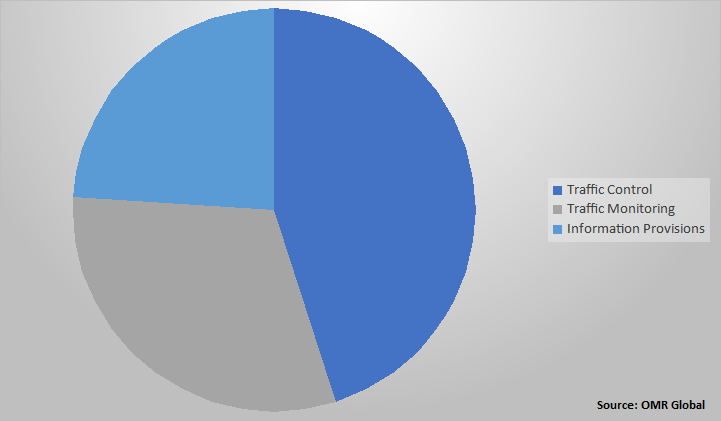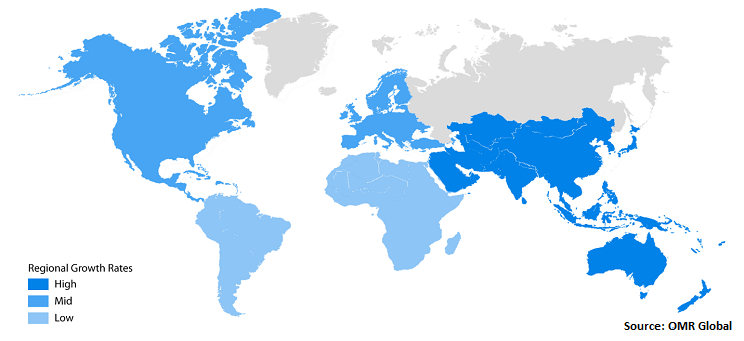The global integrated traffic systems market is anticipated to grow at a CAGR of 8.8% during the forecast period. The integrated traffic system is designed to enable existing roadways to optimize traffic flow. The integrated traffic systems include a traffic data database management system (including details of accidents, road volumes, and signal timing) that links this database to traffic analysis programs. This simplifies data processing within towns, standardizes traffic procedures, and eliminates duplication of computerization efforts. A traffic management system is an IT solution that improves pedestrian safety and protection while facilitating vehicular traffic. The rising traffic jams owing to the increasing number of vehicles, and developments in emergency services and traffic management that empower authorities to speedily respond to accidents and emergencies effectively are the factors that are contributing to the market growth. The usage of integrated traffic systems lessens the travel duration and increases efficiency in traffic management.
Increasing urbanization and car ownership, regulatory frameworks and government policies to reduce carbon emission and increasing concern related to public safety are the major factors that are driving the growth of the global integrated traffic systems market. For instance, according to the United Nation, the CO2 emission would need to fall by 45% from 2010 levels by 2030. And it is targeted to have ‘Zero-emission” by 2050, across the globe. The factors such as lack of standardizing technologies, and high initial investment requirement are hindering the growth of the market. However, increasing public-private partnerships (PPPs), and the rising number of megacities in developing countries are creating an opportunity to grow for the integrated traffic systems market during the forecast period.
Impact of COVID-19 Pandemic on Global Integrated Traffic Systems Market
The global integrated traffic systems market is hit by the outbreak of COVID-19 since December 2019. The automotive and transportation industry is the most exposed verticals to the COVID-19 pandemic. Factor such as changes in consumer behavior due to uncertainty surrounds the pandemic has a serious impact on the industry in the near future. In some countries, public transportation projects, such as subway or light rail, are in the pipeline, and due to the ongoing global pandemic, speeding up transit projects is likely to be postponed. Additionally, the COVID-19 pandemic has disrupted the supply chain of raw materials and products demand in the automotive sector and shut down manufacturing units across the globe. The market will witness “V” shape recovery in near future owing to the restart of key industries in major economies.
Segmental Outlook
The global integrated traffic systems market is segmented based on function, hardware, and sensors. Based on the function, the market is divided into traffic control, information provision, and traffic monitoring. Based on the hardware, the market is divided into display boards, sensors, surveillance cameras, radars, smart traffic lights, and interface boards. Surveillance cameras are anticipated to grow during the forecast period due to real-time traffic tracking, and easily readable information. Also, the declining cost of cameras is system is fueling the application of surveillance cameras in the integrated traffic systems market. Apart from this, based on the sensors, the market is divided into infrared sensors, weigh-in-motion sensors (force sensors), and acoustic sensors. Further, the acoustic sensor is classified into road condition sensors, visibility sensors, thermal mapping sensors, wind speed sensors, and inductive loop detectors.
Global Integrated Traffic Systems Market Share by Function, 2020 (%)

Traffic Control Segment is projected to hold the significant share in the Market
Among the function segment for integrated traffic systems, the traffic control segment is anticipated to grow during the forecast period. Road connectivity restraints in both developed and emerging economies have fueled the growth of innovative and existing technology such as integrated traffic systems. Commuters and governments have increased their need for smooth, congestion-free travel as traffic and the population in urban areas have grown. Moreover, the vehicle ownership ratio has increased significantly across the globe, which has led to increasing demand for traffic control functions. For instance, according to the Census Bureau for the US, around 32.7% of housing units with one vehicle, and 37.2% with two vehicles are available in the US. Due to the scarcity of space, the existing road system must be used to its full potential. Traffic control systems, such as parking management and intelligent traffic lighting, are necessary for optimal use of road infrastructure. As a result of these considerations, the traffic control system segment is expected to grow during the forecast period.
Regional Outlooks
The global integrated traffic systems market is further segmented based on geography including North America (the US, and Canada), Europe (Italy, Spain, Germany, France, and Others), Asia-Pacific (India, China, Japan, and Others0, and the Rest of the World (the Middle East and Africa, and Latin America). Europe has been predicted to dominate the global integrated traffic systems market due to its strong focus on emission and congestion-free traffic in major countries such as UK, Germany, France and others. Furthermore, Europe has always been a pioneer of new technology including integrated traffic systems. Germany and the UK are expected to lead Europe's market share in the integrated traffic systems market.
Global Integrated Traffic Systems Market Growth, by Region 2021-2027



